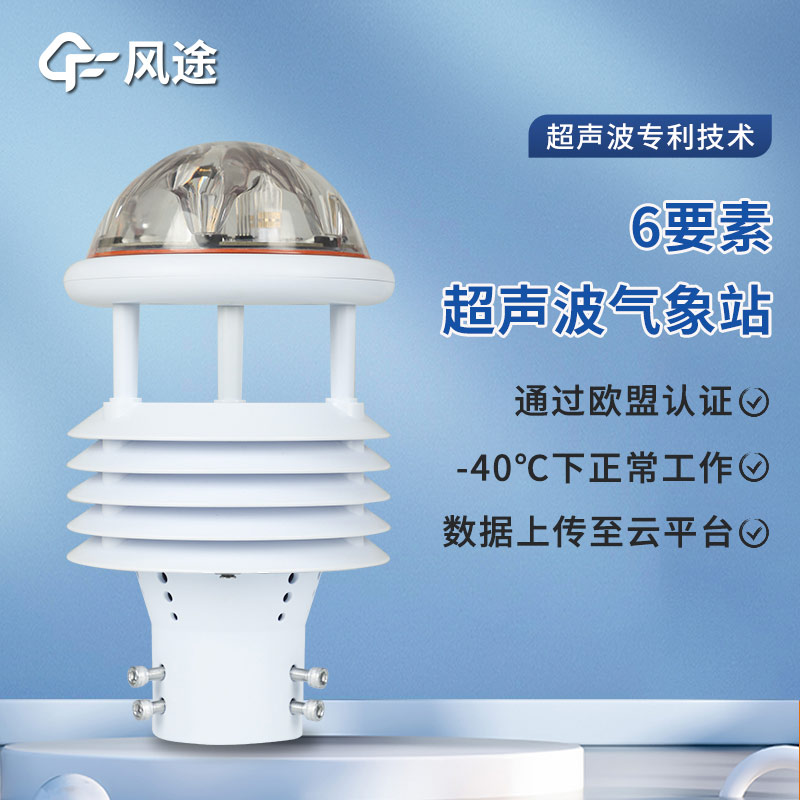Tianqiong Sensor IOT Technology Co., Ltd
Sales Manager:Ms. Emily Wang
Cel,Whatsapp,Wechat:+86 15898932201
Email:info@fengtutec.com
Add:No. 155 Optoelectronic Industry Accelerator, Gaoxin District, Weifang, Shandong, China

Sales Manager:Ms. Emily Wang
Cel,Whatsapp,Wechat:+86 15898932201
Email:info@fengtutec.com
Add:No. 155 Optoelectronic Industry Accelerator, Gaoxin District, Weifang, Shandong, China
time:2025-08-11 08:56:24 source:Weather Station viewed:193 time
Micrometeorology refers to the small-scale climatic characteristics formed in the near-surface atmosphere and upper soil due to the specific structural features of the underlying surface. These characteristics may be reflected in individual meteorological values, or in specific weather phenomena such as variable wind, rain, snow, etc. Since it affects the local environment, accurate measurement of micrometeorology is essential for agricultural production, ecological research, and the safety of infrastructure. The core meteorological elements focused on by micrometeorological observation systems are mainly temperature, humidity, wind speed, wind direction, precipitation, and solar radiation. Through continuous monitoring of these elements, we can gain an in-depth understanding of the dynamic changes in the local climate and provide key basis for various decisions. To achieve efficient and accurate monitoring of micrometeorology, micro weather sensor is developed for this purpose.
micro weather sensor takes a powerful cloud data logger as its core, combined with various types of meteorological sensors and auxiliary equipment, to build a flexible, economical and practical online monitoring system. Meteorological sensors accurately measure various meteorological elements, and then transmit the data to the data logger. The data logger not only undertakes the operation control task of the entire system, but also is responsible for data storage, ensuring that every monitoring data can be completely recorded.
The interface design is very flexible. A set of equipment has multiple sensor interfaces and can support the measurement of more than ten observation parameters. The power supply mode is also diverse, with a built-in solar panel and a rechargeable battery, making operation simple and convenient. The equipment provides a variety of sensors for users to choose from, and can be configured and combined in various ways according to different needs. The overall equipment is small and portable, and adopts a rugged and durable design, which can adapt to various complex environments. The equipment can also be connected to a professional cloud platform, allowing users to obtain data in quasi-real time and realize remote management. This equipment is especially suitable for joint observation of multiple stations, facilitating the establishment of observation networks and expanding the monitoring range.
It is widely used in agriculture, forestry, urban microclimate research, air pollution diffusion analysis, greenhouse meteorological monitoring, soil moisture monitoring, precipitation monitoring, and meteorological measurement in field scientific expeditions. The core data logger supports remote data download. In addition to the traditional functions of data collection, recording and local connection for data acquisition, it can also transmit data to a professional cloud server via mobile operator networks or WiFi networks. Users can log in to their personal accounts via the Internet to remotely view data charts, download monitoring data, and set up sensors. The supporting cloud data platform can realize remote management of instruments and equipment, online data acquisition and rapid analysis, as well as convenient display and sharing of data results. This makes scientific research data acquisition more timely and field monitoring instrument management more efficient, effectively saving time and funds. Users can log in to the platform through computers, mobile phones and other mobile devices to manage equipment and view data anytime and anywhere.

In the production and use of photovoltaic modules, grid breakage is a relatively common and thorny problem. Grid breakage refers to the existence of breakpoints in the silver paste printing of the main grid of the solar cell, which causes the fine grid lines on the solar cell to be open-circuited wi...
In the era of great health, the intelligent health care industry is thriving, and people are paying increasing attention to a healthy living environment. Negative oxygen ions, known as the "vitamin of the air," are becoming the focus of the intelligent health care field. The Negative oxyge...
The Atmospheric Visibility Sensor is a device that accurately acquires atmospheric visibility data.The working principle of the Atmospheric Visibility Sensor is based on the theory of light scattering. The instrument is equipped with a light source of a specific wavelength, mostly an infrared LED li...
TianQiong, as a professional supplier of meteorological monitoring equipment, offers a wide range of weather station types. The company provides everything from basic sensors to regional automatic weather stations that meet operational observation standards, and also specializes in developing profes...